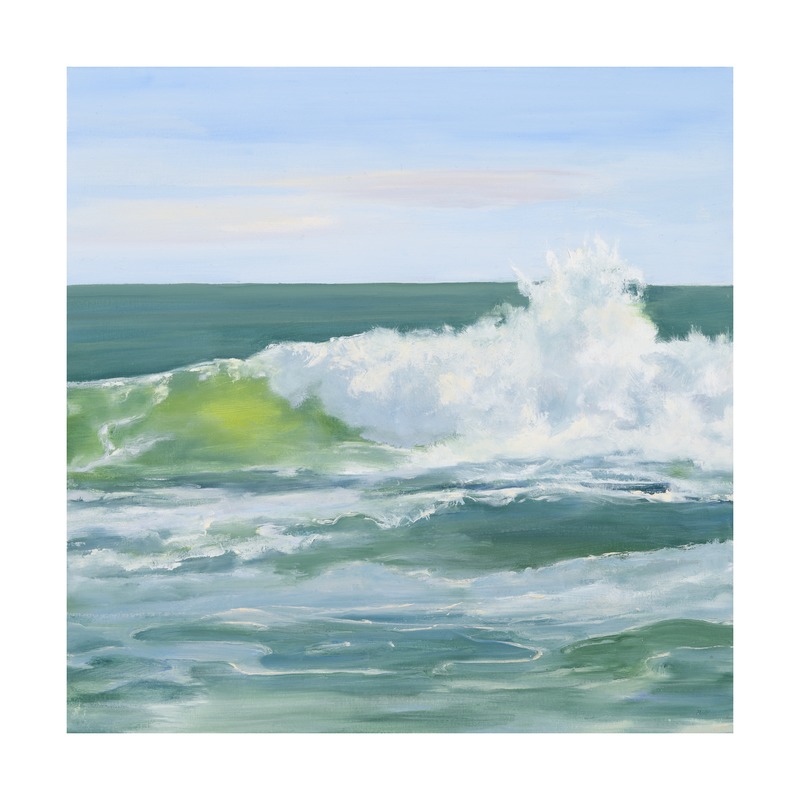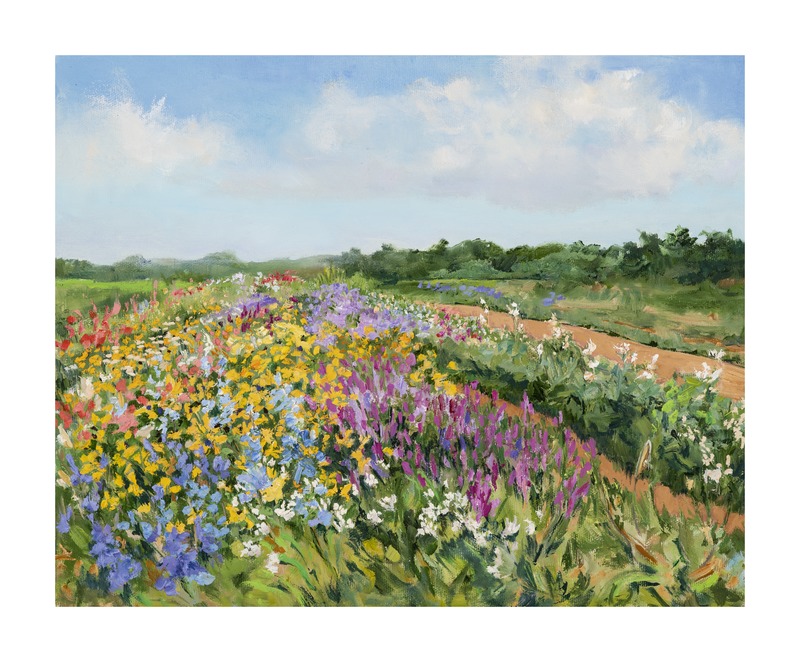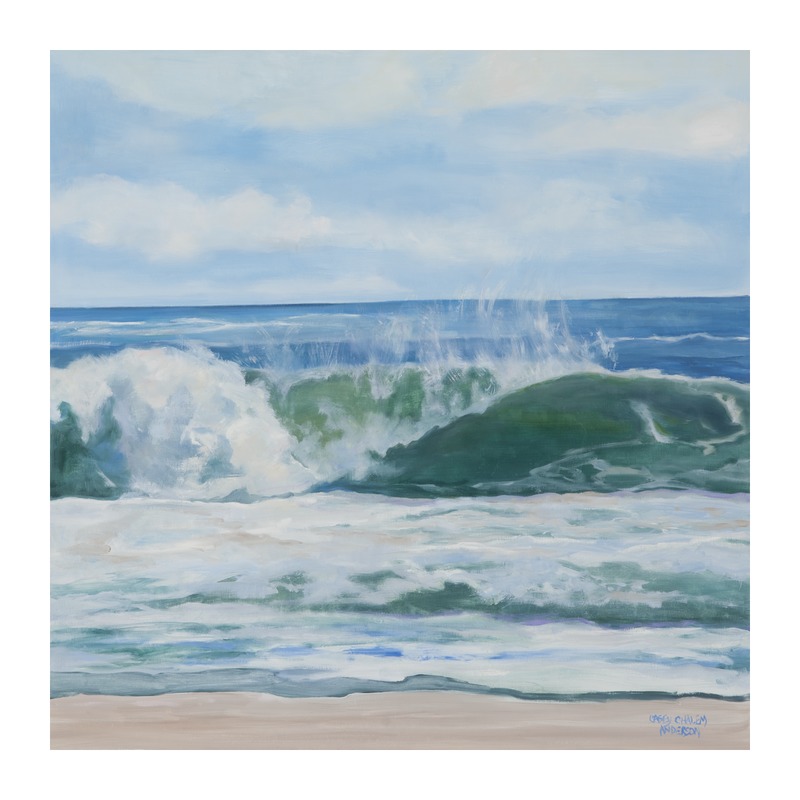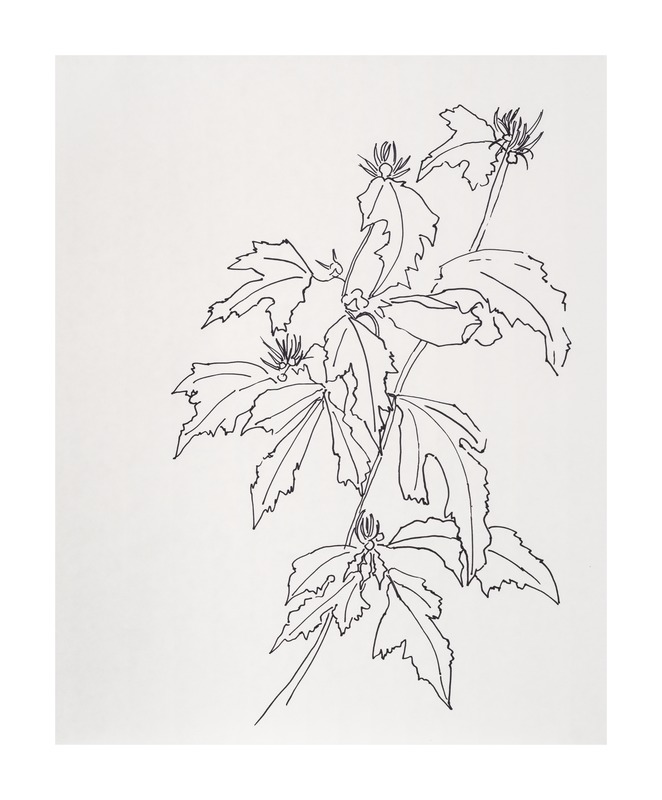Featured Artist | Casey Chalem Anderson

About the Artist
Casey Chalem Anderson is a Greenwich Village native who creates oil paintings of the Hamptons landscape. She can often be found at the beach, observing the changes in time, color, and weather. To help protect the land and water that is so essential to her paintings, Casey worked with fellow artists to create Plein Air Peconic, an independent artist group that supports the Peconic Land Trust. We caught up with the artist on her childhood in Greenwich Village, painting en plein air, and her advice for aspiring artists.
THE ARTFUL REVIEW: What was it like growing up in Greenwich Village in the 1960s, experiencing firsthand the revival of art, music and literature of that era? Do these influences continue to inspire your work?
CASEY CHALEM ANDERSON: Growing up in the Greenwich Village of the 1960’s, known as a center for progressive avant-garde culture, definitely plays a role in who I am today. My parents moved to the Village because they wanted to be at the center of new ideas. They both craved a creative lifestyle and rejected a life where you have to fit in and conform. I grew up on the cusp of the Beatnik generation and just as the Hippie movement gained traction.
The low-rise buildings and odd street angles of the Village are in complete contrast to New York City’s uptown, with its rigid grid of skyscrapers. Everything about downtown is unconventional, and the random pattern of the historic streets underlines just how different it is from anywhere else.
Although these days real estate there is high end, during the 60’s it was affordable. People attracted to unorthodox ideas came from all over the world to find like-minded people in art and music, in literature, in dance and in politics. Personally, I’m a bit more traditional than my parents, I had to rebel in some way. The truth is that progressive ideas are so completely embedded in me that I continue to seek out people and places that are atypical. Most importantly, I stuck with being a full time artist.
As a kid, after school I spent most of my time in Washington Square Park on the swings or riding my bike around the “circle,” the fountain where even today musicians from all over bring their guitars and play for anyone who will listen. Other days I was home making something. I grew up in the kind of disheveled apartment where there were always art supplies available. Strips of film were taped to our apartment walls waiting for my dad to edit, and my mom was often drawing or making collages. My mom, who is left handed like me, knows how to draw well. I’d always watch how she did it very carefully. It seemed that all my parents’ friends were either artists, writers or musicians, so my brother and I were towed along to see a lot of art and listen to all kinds of music.
As a child if I was ever bored, I was directed to make something. Today I’m never bored. I stay energized as I always have an art project going. It could be a series of paintings, photos I want to capture, or drawings in a sketchbook that call to me.
AR: At what age did you begin to paint en plein air? Was the ocean always a favorite subject?
CCA: I didn’t paint en plein air until I moved to Sag Harbor (a small historic town in the Hamptons on Eastern Long Island) in the early 90’s. For years before that I studied and painted the figure. While at the University of California, Berkeley, I studied with two of the famed Bay Area Figurative painters, Joan Brown and Elmer Bischoff.
Today after living by the ocean for a few years, I am captivated by the sea. I especially love the flatness of the land here in the Hamptons, a very different vantage point than in California where you are often viewing the sea from above. When I stretch my eyes into the distance to view the wide horizontal line where sky meets the water, I feel instantly quiet inside.
Observing the changing colors, breathing in the salty air and listening to the beat of the waves both calms and energizes me at the same time. I try to capture the rhythm of nature in my ocean paintings and help people access the peace and tranquility you feel at the seashore.
I usually make small studies on site and then create large paintings in my Sag Harbor studio. The Hamptons view of the horizon line is a view uninterrupted by anything man-made. It is a view that humankind has been observing from the very beginning. No wonder we feel at ease at the beach, looking out to the horizon we have no sense of time.
The resources at UC Berkeley, California were so extensive I decided to concentrate my art history studies in Asian Art. I feel a connection to traditional Chinese scroll painting of the 10th-12th century. As the painting scroll is unrolled in real time, the viewer begins a journey through the landscape. There is a parallel experience of being in the landscape that can occur in my own paintings. The importance of weight, balance and line are fundamental concepts in Chinese painting, concepts I always consider in my own work.
Currently making large scale works 6ft x 4 ft. It is challenging and truly exciting to be making these paintings that are bigger than I am. Dance is an element as my whole body is completely involved. I have to be sure to move with good alignment and good posture. It is so easy to forget your body when you are deep into painting.
As I work, I’m listening for the memory of the sound of the ocean. I’m recalling the salty smell of the beach. I never copy detail by detail as you would in a completely photo realistic painting but attempt to conjure a sensibility.
AR: Tell us about your movement toward abstract paintings, and what inspires you.
CCA: I started to think about how everything in painting is abstract. When spending time in NYC, I was struck by the incredible contrast of man-made geometric buildings to the sky and rivers that surround the city. I wanted to explore that intersection where nature and man collide.
That opened a door to a new way of thinking about paint and lead to my series of soft geometrics. I like the concept of containing portions of color using geometric shapes for scaffolding. I explore the layering effects of oil paint to describe portions of colored air or water. It pushes me to think in new ways about the basic elements of painting like composition, opaque vs transparent use of paint, size and shape separate apart from creating the illusion of space. It is liberating and challenging.
AR: Tell us a bit about the Peconic Land Trust, and your work in helping to found Plein Air Peconic.
CCA: Plein Air Peconic was created about 11 years ago as a way for artists to support the efforts of land preservation on the East End of Long Island. After all, without land preservation I would not have farm fields of vegetables and flowers rolling to the sea or clean marshes and inlets to paint. It’s a wonderful relationship between conservationists and artists.
AR: Any advice for aspiring artists?
CCA: There was never any question in my mind that I was an artist. It wasn’t a decision I made one day, it just evolved to where it is now. I was allowed and encouraged to be creative by my parents. If you love to make things, if you love to draw and paint or take photos, it is very important to honor that part of yourself even if it is in a small way. Be consistent, set personal goals to accomplish making the work. Creating a series of loosely themed work helps. I believe that this will lead you to the next new idea.













